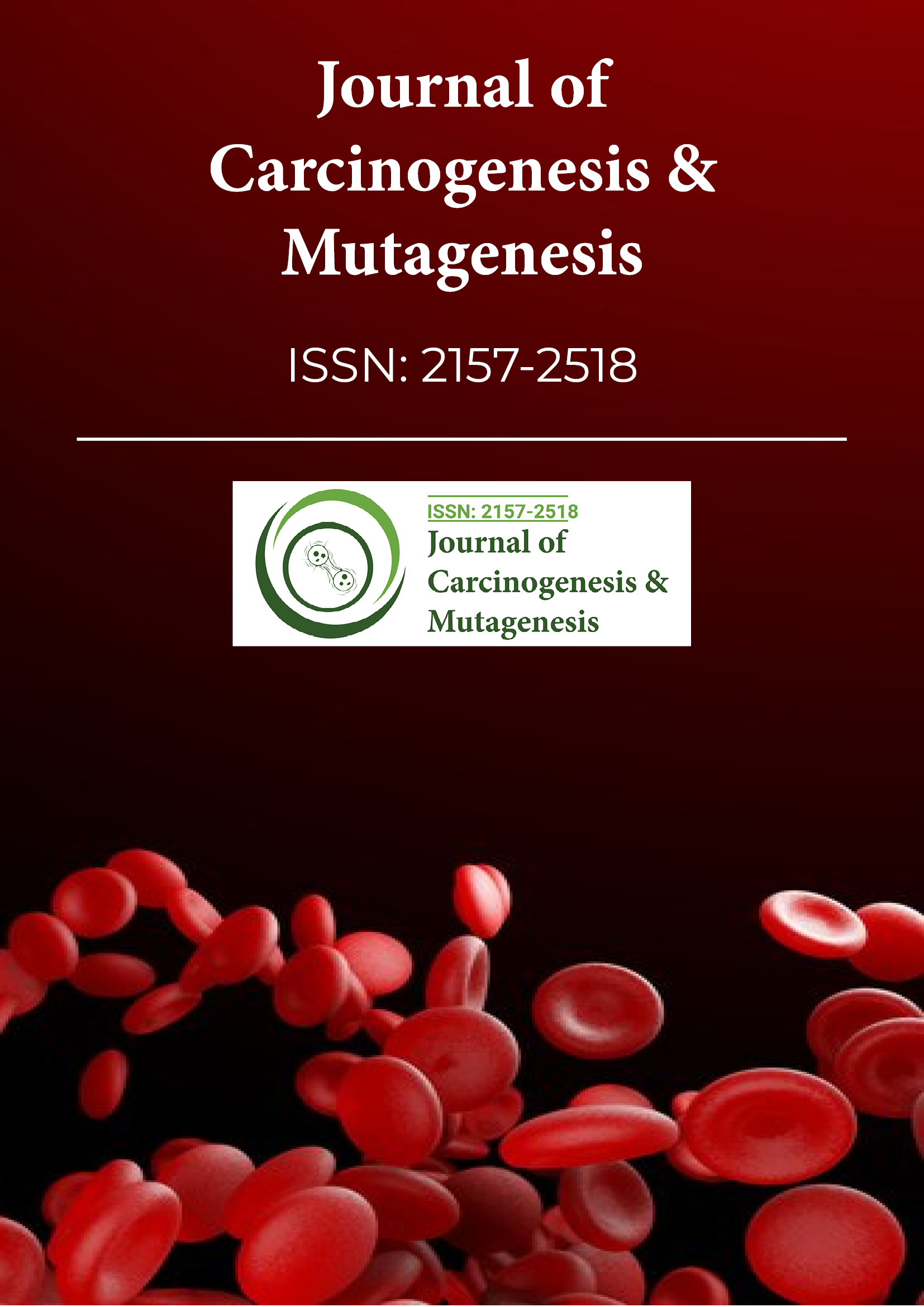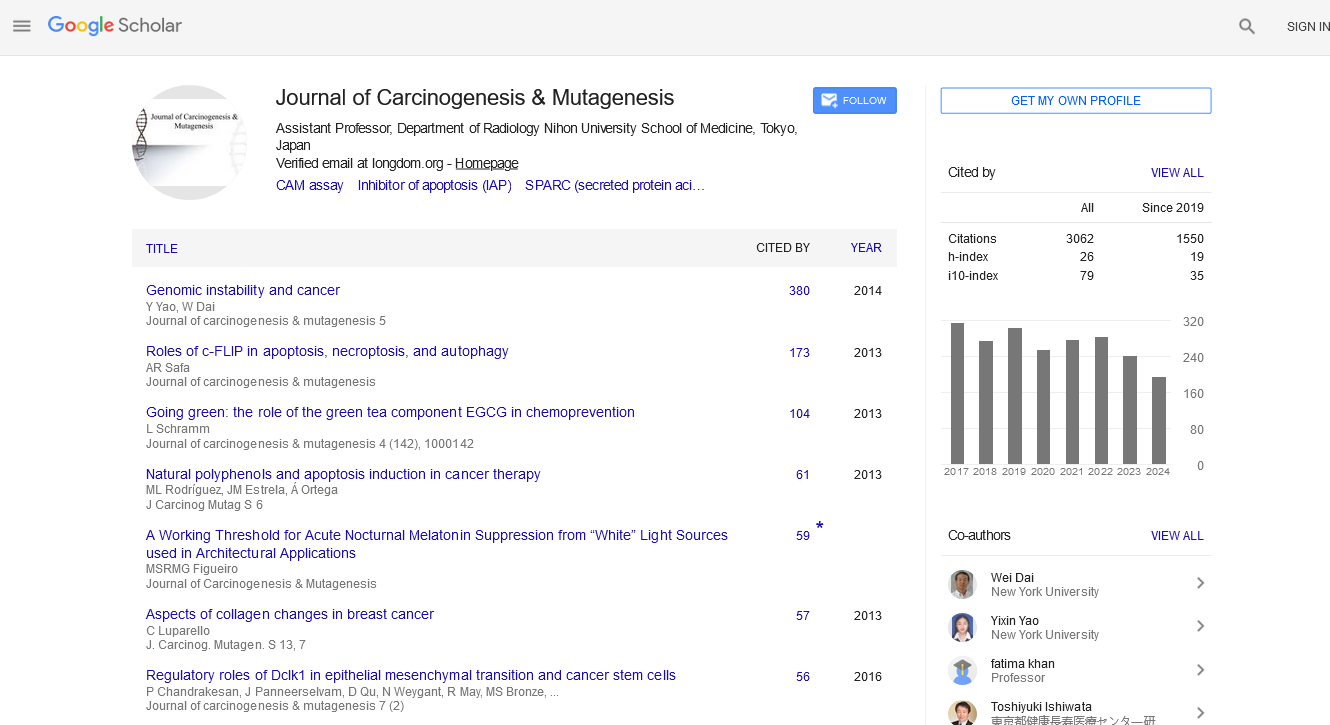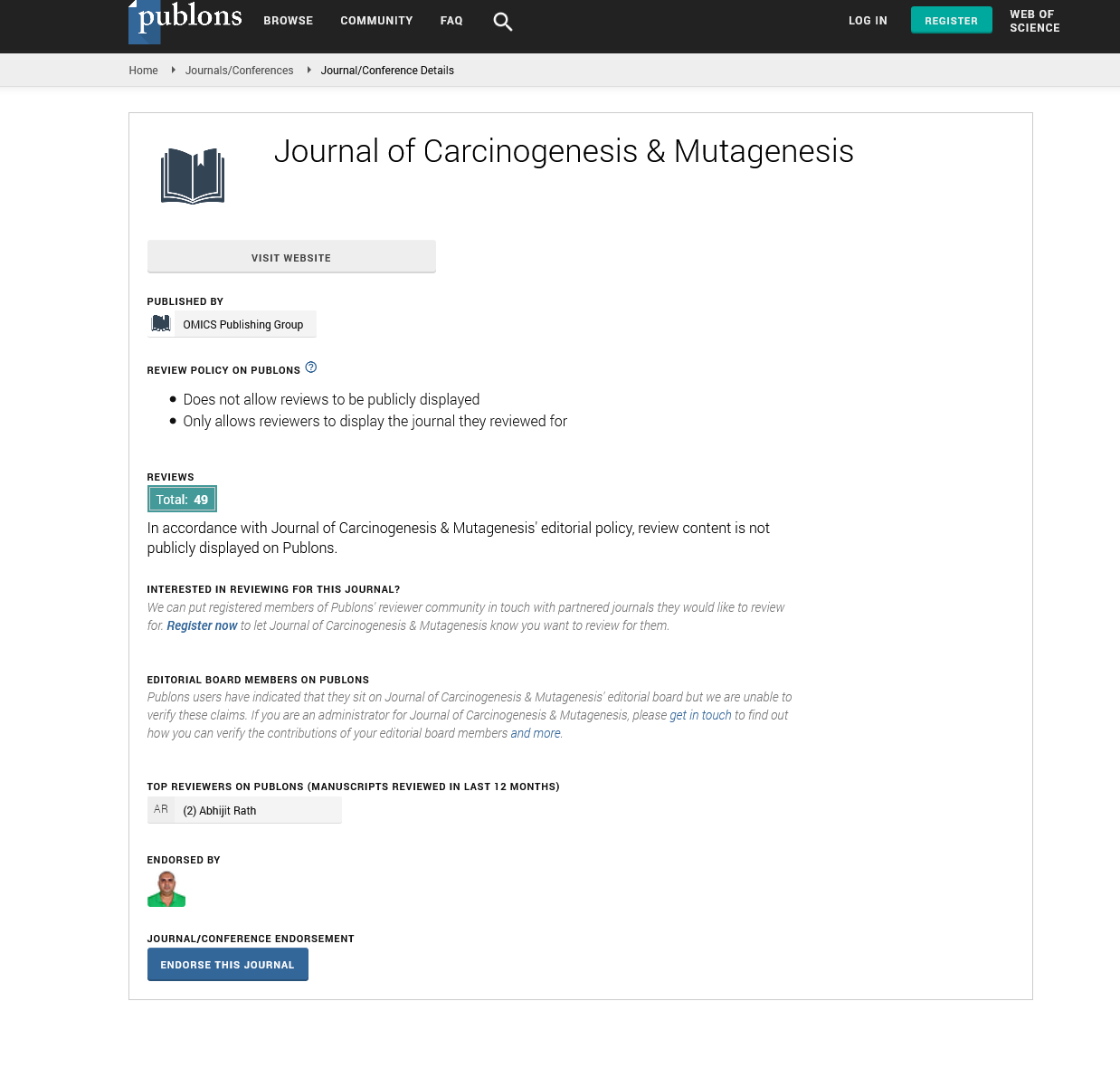Indexed In
- Open J Gate
- Genamics JournalSeek
- JournalTOCs
- Ulrich's Periodicals Directory
- RefSeek
- Hamdard University
- EBSCO A-Z
- OCLC- WorldCat
- Publons
- Geneva Foundation for Medical Education and Research
- Euro Pub
- Google Scholar
Useful Links
Share This Page
Journal Flyer

Open Access Journals
- Agri and Aquaculture
- Biochemistry
- Bioinformatics & Systems Biology
- Business & Management
- Chemistry
- Clinical Sciences
- Engineering
- Food & Nutrition
- General Science
- Genetics & Molecular Biology
- Immunology & Microbiology
- Medical Sciences
- Neuroscience & Psychology
- Nursing & Health Care
- Pharmaceutical Sciences
Perspective - (2025) Volume 16, Issue 2
The Impact of Environmental Carcinogens on Human Health
Sumira Malik*Received: 28-Nov-2023, Manuscript No. JCM-23-24185; Editor assigned: 01-Dec-2023, Pre QC No. JCM-23-24185 (PQ); Reviewed: 16-Dec-2023, QC No. JCM-23-24185; Revised: 12-Mar-2025, Manuscript No. JCM-23-24185 (R); Published: 20-Mar-2025, DOI: 10.35248/2157-2518.25.16.473
Introduction
In the complex tapestry of factors contributing to cancer development, environmental carcinogens play a significant role. These substances, present in the air we breathe, the water we drink, and the food we consume, can have profound effects on human health. Understanding the role of environmental carcinogens is crucial in our collective effort to mitigate cancer risks and promote a healthier living environment.
Description
Ubiquitous presence
Environmental carcinogens are pervasive and can originate from various sources, both natural and human-made. Some substances are byproducts of industrial processes, while others occur naturally in the environment. Examples include air pollutants, water contaminants, pesticides and certain food additives. The exposure to these carcinogens can be direct, such as inhalation or ingestion or indirect through contact with contaminated surfaces.
Airborne carcinogens: The air we breathe is a complex mixture of gases and particulate matter, and unfortunately, it can also contain carcinogenic substances. Industrial emissions, vehicle exhaust and combustion processes release pollutants such as benzene, formaldehyde and Polycyclic Aromatic Hydrocarbons (PAHs) into the atmosphere. Prolonged exposure to these airborne carcinogens has been linked to various cancers, including lung cancer and leukemia.
Waterborne carcinogens: Contaminated water sources pose another significant risk, as certain chemicals and pollutants have the potential to induce cancer. For example, exposure to arsenic, a naturally occurring element in some water sources, has been associated with skin, lung and bladder cancers. Industrial discharges and agricultural runoff can introduce pesticides and heavy metals into water bodies, further increasing the risk of cancer development.
Pesticides and agricultural chemicals: The use of pesticides and agricultural chemicals is widespread in modern farming practices. While these substances are intended to protect crops from pests and enhance agricultural productivity, they can inadvertently pose risks to human health. Some pesticides, such as organophosphates and glyphosate, have been classified as potential carcinogens. Agricultural workers and individuals residing in close proximity to farming areas may face increased exposure to these carcinogens.
Food additives and contaminants
The food we consume can also be a source of exposure to environmental carcinogens. Certain food additives and contaminants, such as nitrites and aflatoxins, have been implicated in cancer development. Nitrites, commonly used as preservatives in processed meats, can form nitrosamines, which are known carcinogens. Aflatoxins, produced by molds that can contaminate food crops, have been linked to liver cancer.
Occupational exposure: Certain professions entail a higher risk of exposure to environmental carcinogens. Workers in industries such as manufacturing, mining and construction may encounter carcinogenic substances as part of their daily tasks. Asbestos, for example, widely used in the construction industry for its insulation properties, is a known carcinogen associated with lung cancer and mesothelioma. Occupational safety measures are crucial in minimizing the risks faced by workers in such environments.
Children and vulnerable populations: Children and individuals with compromised immune systems or pre-existing health conditions may be more susceptible to the adverse effects of environmental carcinogens. Developmental exposure to certain substances during pregnancy or early childhood can have lasting effects, potentially increasing the risk of cancer later in life. Ensuring the protection of vulnerable populations is a critical aspect of public health initiatives aimed at reducing the impact of environmental carcinogens.
Regulatory measures and public awareness: Governments and regulatory bodies worldwide implement measures to monitor and control exposure to environmental carcinogens. Regulations on air and water quality, pesticide use and food safety contribute to safeguarding public health. Additionally, public awareness campaigns educate individuals about potential risks and encourage lifestyle choices that reduce exposure to environmental carcinogens.
Conclusion
The role of environmental carcinogens in cancer development is a multifaceted and dynamic field of study. As our understanding of these substances and their impact on human health evolves, so too do the strategies to mitigate risks. Comprehensive regulatory frameworks, stringent industrial standards and public education initiatives are essential components of a holistic approach to minimizing exposure to environmental carcinogens. By collectively addressing these factors, we can strive towards creating a healthier and safer environment for current and future generations, reducing the burden of cancer on global public health.
Citation: Malik S (2025) The Impact of Environmental Carcinogens on Human Health. J Carcinog Mutagen. 16:470.
Copyright: �© 2025 Malik S. This is an open-access article distributed under the terms of the Creative Commons Attribution License, which permits unrestricted use, distribution, and reproduction in any medium, provided the original author and source are credited.


